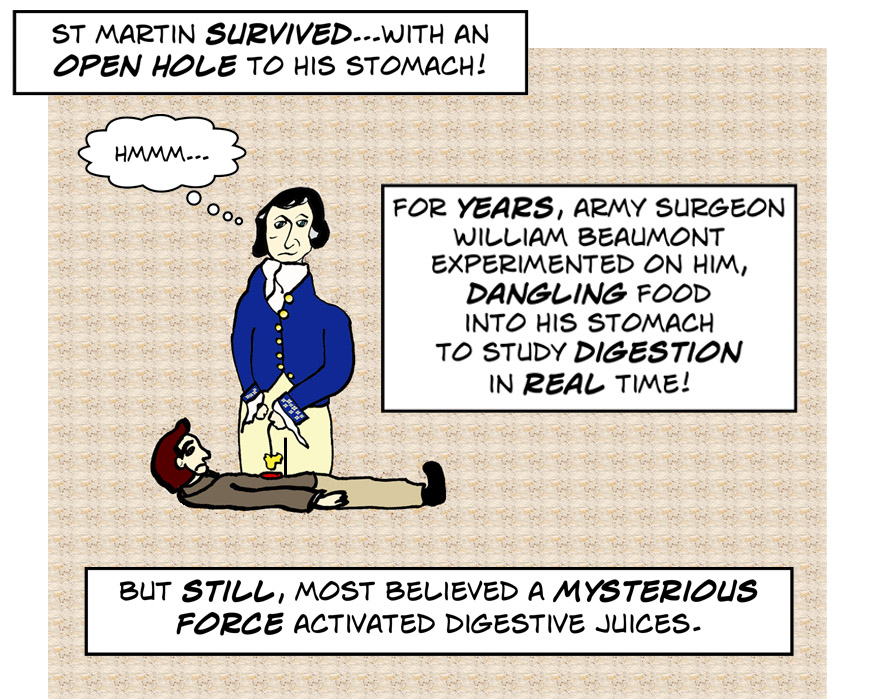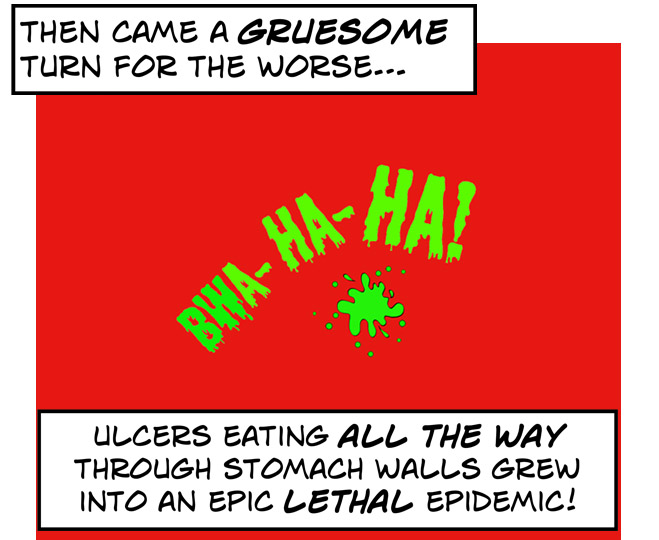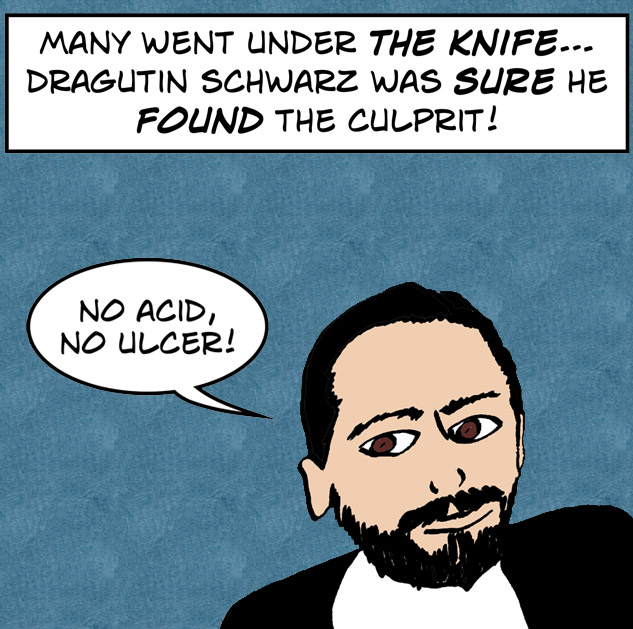Pylori Story #1: Acid Attack
Digestion! Stomach grinds, fermentation sparked by vitalism… Even Pasteur believed it! But others said chemistry could do it. They found… acid. But most scientists were unconvinced…
Pylori Story Continues! Click on links for other installments below.
WARNING: spoilers ahead.
(More about peptic ulcers.)
A most mysterious epidemic
The belief that stomach ulcers are caused by stress and worry is a hard one to shift. Even in 1995, the CDC reports that 90% of Americans blamed stress and worry for ulcers – and nearly that many had never heard of H. Pylori.
Russian neurophysiologist, Ivan Pavlov, didn’t just show that gastric gland secretion was stimulated by the vagus nerve. He also showed that digestive juices could be set off psychologically. It seems like an easy thing to believe – thinking of food can make our mouths water and stomachs rumble. Being upset can lead to digestive upsets. So why not something worse?
Doctors had originally needed convincing, though. Davies and Wilson,1937:
Our training makes us reluctant to believe that disturbance in the nervous system is capable of producing structural change in an organ apparently so remote as the stomach. The furthest point of agreement in this direction is the belief that men and women of a definite constitutional type, the distinctive features of which are already well-recognised, are prone to develop ulcer.
So what was this “type”?
In both men and women the long thin face, the sharpened nose, the angular jaw, the absence of spare fat, and the deep lines from ale nasi to the angles of the mouth make together a typical facies. There is also a rather aggressive alertness and readiness to tackle any job or problem – ‘an alert watchful expression which conveys a suggestion of continual apprehension mixed with defiance’…A serene contented facies is never seen.
There was, in fact, a long ulcer epidemic – and it affected a generation. Perhaps 10% of people had peptic ulcers in developed countries – and 10% of them would have surgery (Weir 1968). Around 5 out of every 100,000 people were dying from peptic ulcers (age-adjusted data, Kurata 1983). Several things were probably contributing – infection as people urbanized, smoking, and the large-scale use of aspirin and the non-steroidal anti-inflammatory drugs (NSAIDs). (More on this later in Pylori Story.)
But stress and spicy food were not among the reasons. The bismuth in antacids like Pepto Bismol, though, helped a little anyway: bismuth can’t eradicate H. Pylori (the infectious cause of peptic ulcers), but it does reduce the bacteria.
Bibliography:
Davies DT, Macbeth Wilson AT. Observations on the life-history of chronic peptic ulcer. The Lancet 1937; 1353-1360.
Kurata JH, Elashoff JD, Haile BM, Honda GD. A reappraisal of time trends in ulcer disease: factors related to changes in ulcer hospitalization and mortality rates. Am J Pub Health 1983; 73: 1066-1072.
Modlin IM, Sachs G, Wright N, Kidd M. Edkins and a century of acid suppression. Digestion 2005; 72: 129-145.
Primatesta P, Goldacre MJ, Seagroatt V. Changing patterns in the epidemiology and hospital care of peptic ulcer. Int J Epid 1994; 23: 1206-1217.
Weir RD, Backett EM. Studies of the epidemiology of peptic ulcer in a rural community: prevalence and natural history of dyspepsia and peptic ulcer. Gut 1968; 9: 75-83.
~~~~
The comic in this post is my own (CC-NC-ND-SA license). With apologies for the lack of the resemblance to the actual people depicted! (More of my cartoons at Statistically Funny and on Tumblr.)
The Nobel image is based on the image of Alfred Nobel in Wikimedia Commons, by AlphaZeta.
* The thoughts Hilda Bastian expresses here at Absolutely Maybe are personal, and do not necessarily reflect the views of the National Institutes of Health or the U.S. Department of Health and Human Services.














